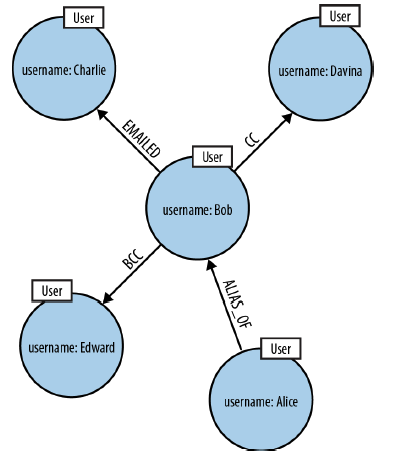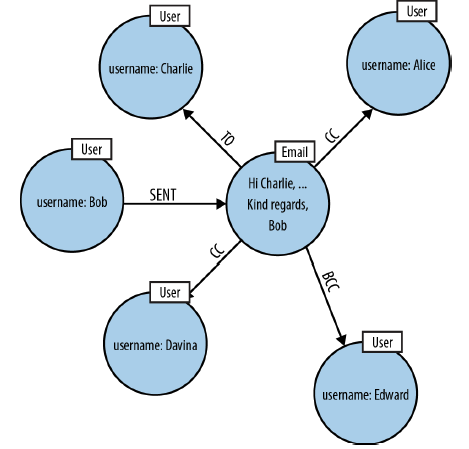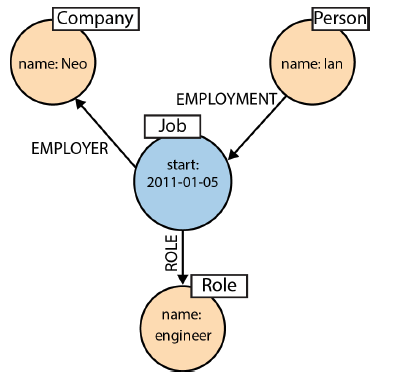In order to avoid pitfalls we have to check the design for queryability
- Describe the client or end-user goals that motivate our model
- Rewrite these goals as questions to ask of our domain
- Identify the entities and the relationship that appear in these questions
- Translate these entities and relationships into Cypher path expressions
- Express the questions we want to ask of our domain as graph patterns using path expressions similar to the ones we used to model the domain
Email Modeling Comparison


Email as a node expands the domain capability
Conclusion Elements from Email Example
- Common nouns become labels: “user” and “email”
- Verbs that take an object become relationship name “sent” and “wrote”
-
Detail attributes related to noun becomes a properties. For example name of the user, or title of the email
- Avoid Anti-patterns by not Verbing (the language habit whereby a noun is transformed into a verb) can hide the presence of a noun. By other words think over business jargon
- Jargon: “Email one Another”, Actually: “Send an Email”
- Jargon: “Search Google”, Actually: “Search for Results”
## Fine-Grained versus Generic Relationships
- When designing relationships has trade-offs between using fine-grained relationships versus generic relationships:
- DELIVERY_ADDRESS, HOME_ADDRESS
- ADDRESS {type: ‘delivery’}, ADDRESS {type: ‘home’}
Model Facts as Nodes
- When two or more domain entities interact for a period of time, a fact emerges
- Fact should be represented as a separate node with connections to each of the entities engaged in that fact

CREATE (:Person {name:'Ian'})-[:EMPLOYMENT]->
(employment:Job {start_date:'2011-01-05'})
-[:EMPLOYER]->(:Company {name:'Neo'}),
(employment)-[:ROLE]->(:Role {name:'engineer'})
Timeline Trees

- Episodes of the Drama Series can have following type of timeline graph with dates
- Additionally Episode nodes may have relationship edges among themselves with labels “next” and “previous” which would accelerate iteration over episodes
Iterative and Incremental Development

- Graph databases provide for the smooth evolution of data model
- Migrations and denormalization are rarely an issue
- New facts become new nodes
- New compositions become new relationships
- New and legacy relationships may exist at the same time before the application level codebases are modified